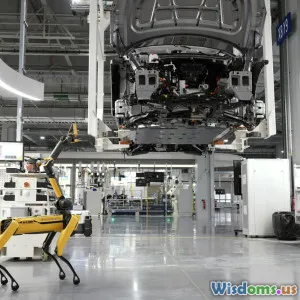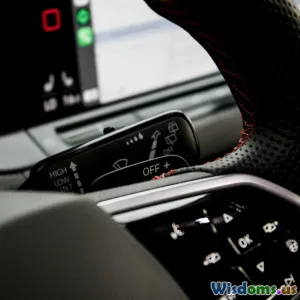
एआई का ऑटोमोटिव डिज़ाइन पर प्रभाव
(The Impact of AI on Automotive Design)
6 मिनट पढ़ें देखिए कि कैसे एआई ऑटोमोटिव डिज़ाइन में क्रांतिकारी बदलाव ला रहा है, रचनात्मकता, दक्षता और सुरक्षा को बढ़ाते हुए वाहन विकास में। (0 समीक्षाएँ)
The Impact of AI on Automotive Design
In recent years, artificial intelligence (AI) has emerged as a transformative force across various industries, and the automotive sector is no exception. As we enter a new era of vehicle design and technology, AI is reshaping the way cars are conceived, developed, and manufactured. This article explores the profound impact of AI on automotive design, focusing on creativity, efficiency, and safety enhancements.
1. Enhancing Creativity in Design
Traditionally, automotive design has relied heavily on human creativity and intuition. Designers often faced the challenge of balancing aesthetics, functionality, and safety. However, with AI-powered design tools, the creative process has become more dynamic and data-driven.
AI-Driven Design Tools
AI algorithms can analyze vast datasets, including consumer preferences, market trends, and historical design successes. These insights enable designers to experiment with various styles and configurations, leading to innovative vehicle designs. For instance, companies like BMW and Ford are utilizing AI systems to generate design variations, allowing for rapid prototyping and iteration. This not only saves time but also fosters creativity by breaking conventional design boundaries.
Generative Design
One of the most exciting applications of AI in automotive design is generative design. This method leverages algorithms to explore a multitude of design options based on specified constraints, such as materials, manufacturing processes, and performance criteria. By doing so, generative design can yield unexpected and optimized solutions that human designers might overlook.
2. Streamlining the Design Process
AI is not just improving creative output; it's also revolutionizing the efficiency of the design process itself.
Automation of Repetitive Tasks
Many aspects of automotive design involve repetitive tasks, such as creating detailed 3D models or adjusting designs based on testing feedback. AI can automate these tasks, allowing designers to focus on higher-level creative functions. For example, AI can analyze simulation data and suggest design modifications, significantly shortening the feedback loop between testing and design updates.
Predictive Analytics
Moreover, AI can predict potential design flaws before physical prototypes are built. Machine learning algorithms can analyze data from previous models and real-world usage to identify patterns that may lead to issues. This predictive capability helps manufacturers avoid costly recalls and enhances the overall reliability of vehicle designs.
3. Improving Safety Standards
Safety is paramount in automotive design, and AI is playing a crucial role in enhancing vehicle safety standards.
Advanced Driver Assistance Systems (ADAS)
AI technologies are integral to the development of Advanced Driver Assistance Systems (ADAS). These systems use AI algorithms to process data from sensors and cameras, allowing vehicles to make real-time decisions to prevent accidents. Features such as lane-keeping assistance, automatic emergency braking, and adaptive cruise control rely heavily on AI's ability to interpret complex driving environments.
Simulation and Testing
AI also streamlines safety testing by simulating various crash scenarios and vehicle behaviors. This enables engineers to evaluate how designs will perform under different conditions without the need for extensive physical testing. AI-driven simulations provide valuable insights into structural integrity, occupant safety, and overall vehicle performance, ultimately leading to safer designs.
Conclusion
The impact of AI on automotive design is profound and multifaceted. By enhancing creativity, streamlining processes, and improving safety standards, AI is not only changing how vehicles are designed but also ensuring that they meet the evolving demands of consumers and regulatory standards. As AI technology continues to advance, we can expect even more innovative solutions that will shape the future of the automotive industry, making vehicles safer, more efficient, and more appealing to consumers.
In summary, the integration of AI into automotive design represents a significant leap forward, one that promises to redefine the landscape of vehicle manufacturing and design for years to come.
पोस्ट को रेट करें
उपयोगकर्ता समीक्षाएँ
वाहन प्रौद्योगिकी में अन्य पोस्ट
लोकप्रिय पोस्ट














